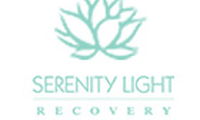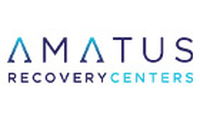30-60 Days Drug and Alcohol Rehab
 Deciding to seek treatment for drug and alcohol abuse is a difficult first step. Not only does it require courage, but it requires support from professionals, family members, friends, and a vast number of others in order to lead a sober life.
Deciding to seek treatment for drug and alcohol abuse is a difficult first step. Not only does it require courage, but it requires support from professionals, family members, friends, and a vast number of others in order to lead a sober life.
Addiction is a complex, but treatable disease that affects brain function and behavior. And no single treatment is right for everyone.
Regretfully, the statistics reveal that many people do not receive the care they need to kick their substance abuse:[1]
- Data indicates that over eight percent (more than 21 million adults) needed substance use treatment in the past year
- But only an estimated 10.8 percent (over two million people) actually received treatment
Is a 30-60 Days Recovery Program Right for You?
When considering the right type of addiction recovery program, the length of time spent in treatment can be an important determining factor.
If you have obligations to a job or to your loved ones, the decision of entering into rehab can be complicated. The length of time spent in an inpatient program can weigh heavily on deciding how long to be away from daily life.
When confronting this issue, an evaluation must be made if a 30 or 60-day program can fit into an addictive person’s lifestyle, while still providing the treatment needed to overcome the addiction.
Therefore, it is helpful to search for programs that provide multiple time frames of rehab so that as progress is made, there is an option for continuing care.
Making the Choice
Most programs, regardless of the length, have a common foundation. At their core are three core goals:
- stop using alcohol and drugs
- remain drug-free and prevent relapse
- lead productive lives in their family, at work, and in society
The steps for both one and two-month programs typically involve the same basic services including:
- assessment and evaluation
- detoxification
- therapy and treatment
- aftercare
30-Day Rehab Option
One-month rehab centers provide a chance to detox and begin living a life free of drugs or alcohol dependency, without requiring a long-term commitment.
The main difference between 30-day programs and longer programs (other than the length of time) is the intensity.
A one-month program attempts to condense the same amount of therapy into less time, requiring patients to spend most of their days in treatment.
A 30-day treatment process is extremely common because it can help kick-start a recovery program. The one-month consolidated duration allows for detox under medical supervision and provides an environment to take the initial steps to living sober.
Throughout a one-month program, the focus is primarily on detoxification, withdrawal, the beginning stages of therapy, and perhaps, an aftercare plan. This brief length may be useful from those suffering from a mild case of addition and it is certainly more affordable than longer treatments.
However, it may not be sufficient for many addicted individuals.
A shorter time frame can be limiting. It is common at the end of a 30-day rehab program for clients to continue on with longer treatment, transition into an outpatient program, or follow a structured aftercare plan to help maintain their new sobriety.
For example, those with severe addictions often require a detox program that lasts from three to seven days. Even more extreme cases could require multiple weeks. Frequently, withdrawal symptoms may be serious, even dangerous. When this occurs, it may take weeks before it is possible to participate in therapy sessions. In these cases, a 30-day program is usually not long enough to benefit from the resources available.
Selecting a Short-Term Facility
Listed below are six aspects to investigate when evaluating one-month treatment centers:
- When deciding on entering a residential recovery program, investigate how long they have been providing addiction treatment, as well as the type of accreditation or licensing they have earned.
Accredited facilities have undergone detailed analysis by a respected third-party organization. [2] They have been evaluated on quality, value, and optimal outcomes and have demonstrated they are operating according to high standards.
In fact, accredited centers reviewed by the Commission on Accreditation of Rehabilitation Facilities (CARF) must show that they “employ appropriately trained staff, have high safety standards, are HIPAA-compliant, are culturally sensitive, safe, and more.”
- Evidence-based. There are seemingly endless treatment options available to treat addiction, but not all are based on scientific documentation. Explore the programs offered at the center and ask what systems they base their treatment on and how often they are reviewed.
Examples of evidence-based practices include 12-Step, Cognitive Behavioral Therapy (CBT), and even prescription medications to treat co-occurring conditions. Research is always ongoing and there are newer paths to recovery being developed. Successful and top-rated facilities continually monitor the latest research for the benefit of their clients.
- Patient-to-staff ratio. On-site trained and certified professionals are extremely important due to the short duration of treatment in one-month programs. The availability facility’s team should be readily accessible.
Although not all the personnel need to be doctors, everyone on the workforce should have specific expertise in dealing with addictions.
- Success rate. One of the most important factors to consider is the success of the center’s treatment. Most reputable facilities are willing to share their success rates and may also be able to let you talk to “graduates” of their program to get an idea of their ability to help clients achieve sobriety.
- Post-treatment support. An aftercare plan that outlines outlining resources and programs well as including family members for post-treatment life is essential.
Short-term treatment often only touches the surface of deeper issues and continuing recovery program is the key to maintaining abstinence. After leaving the facility, an individual may be directed to a sober living home, outpatient treatment, 12-step meetings, and additional support programs
Benefits of 60-Day Programs
Sixty-day programs offer many of the same features as the shorter programs, but allow for extended time to experience and take advantage of the resources.
In fact, research validates that the duration of participation in a substance abuse program has a significant effect on a person’s recovery.[3] In other words, people who stay in treatment longer have better outcomes.
Two-month programs allow the addict:
- More time to go through medically supervised withdrawal
- Additional opportunities to learn and practice healthy coping methods
- Development of a detailed and individualized treatment plan
- Ability to become more involved in peer, group, and individual therapy sessions
- Build a positive support network and work on family issues
- Create a long-term strategy for aftercare
A 60-day program allows for additional time to concentrate on recovery and provides for:
- Detailed Treatment. A longer treatment program provides more time to receive therapy, practice necessary new behaviors, and have more confidence when returning to life outside rehab
- Learning New Coping Mechanisms. Building new methods to avoid relapse takes time and practice and often requires more than a 30-day process. An expanded period of time provides opportunities to learn how to avoid and/or handle triggers of the addiction
- Support System. Developing a network of peers for support recovery and the ability to maintain sobriety is better achieved with a longer duration and more comprehensive program
The Important Role of Support Groups
Addiction can be a lonely disease. Group therapy is a safe place where recovering addicts and alcoholics can speak openly about their struggles, without being judged. It provides a setting to gain insight into addiction and healing, while at the same time giving support to others in the group.
The Substance Abuse and Mental Health Services Administration (SAMHSA) finds that the support of peers is essential in reaching sobriety. A peer support group of fellow recovering addicts can not only teach social skills, it can also provide a network of people who are on a similar path to leading a sober life and share the same struggles and successes.
SAMHSA also confirms that “having relationships and social networks that provide support, friendship, love, and hope is necessary for supporting a life of recovery.”[4] People learn in a group therapy setting that they are not alone. Group counseling is a significant component of rehabilitation, helping recovering individuals to become empowered in their own recovery.[5]
Financial Impact
Unfortunately, longer treatment programs are less likely to be covered by an insurance provider.
A 2016 survey asked individuals leaving an addiction recovery facility what they thought were the most valuable parts of a treatment facility. The results indicated that the number one priority was the facility's monetary policies, such as insurance being accepted, payment options, and financial support.
Rehabilitation centers can be expensive whether they are inpatient or outpatient. If financial concerns are an issue, check with your insurance provider for treatment facilities that are in-network with your health policy. This should help minimize the cost. Remember, when insurance plans that say they "work with your insurance" company, it doesn’t always mean you’ll be reimbursed.
However, although 30 and 60-day programs are extremely effective, even longer plans are more advantageous.[6],[7] This is especially true with individuals who have more serious addictions, have relapsed, or suffer from dual diagnoses.[8]
A Final Word
Every addiction and every person are different. Achieving emotional and psychological awareness and progress requires different treatment durations. Effective rehab addresses all of an individual’s needs, and not just their alcohol or drug use.
Perhaps, most importantly is that patients who are not ready to leave rehab do not force themselves to do so if they have concerns. Some individuals may find additional time and more intense treatment necessary to accomplish their goal of living a long and healthy sober life.
References:
[1] https://www.samhsa.gov/data/sites/default/files/report_2716/ShortReport-2716.html
[2] https://healthfinder.gov/FindServices/Organizations/Organization.aspx?code=HR3306
[3] https://www.journalofsubstanceabusetreatment.com/article/0740-5472(94)90061-2/fulltext
[4] https://www.samhsa.gov/find-help/recovery
[5]https://www.researchgate.net/publication/282085597_Improving_Consumer_Satisfaction_with_Addiction_Treatment_An_Analysis_of_Alumni_Preferences
[6] https://www.drugabuse.gov/publications/principles-drug-addiction-treatment-research-based-guide-third-edition/principles-effective-treatment
[7] https://www.drugabuse.gov/publications/principles-drug-addiction-treatment-research-based-guide-third-edition/frequently-asked-questions/how-long-does-drug-addiction-treatment
[8] https://link.springer.com/article/10.1023/A:1021275516753







